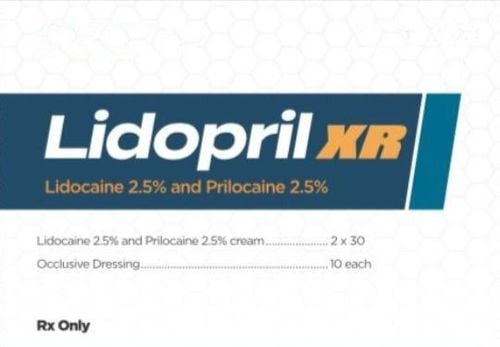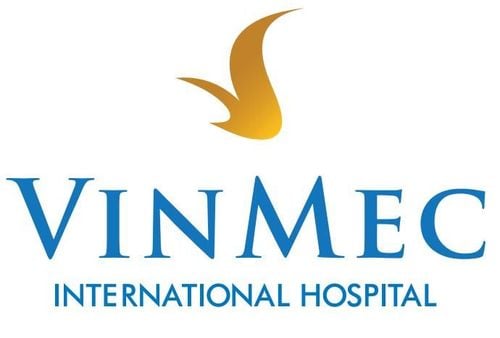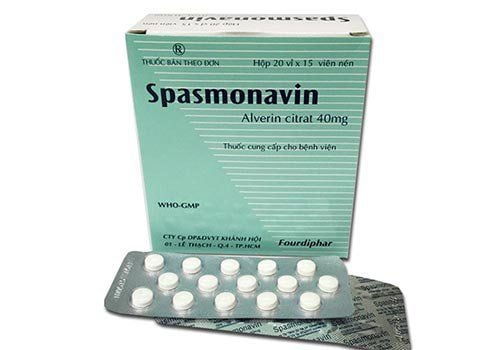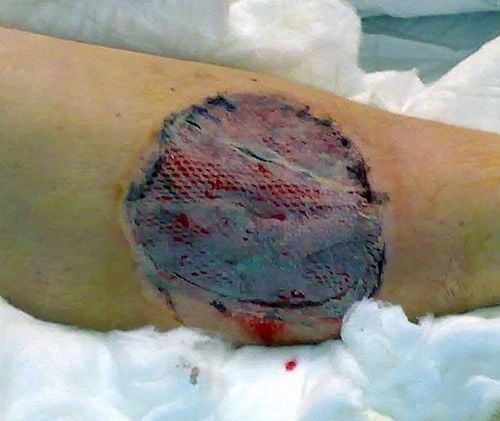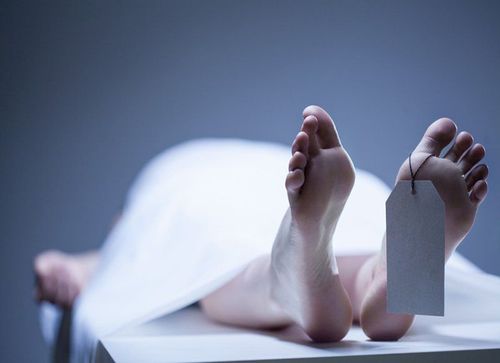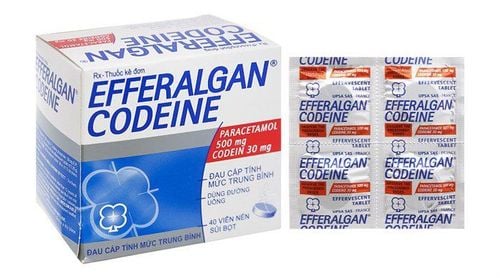This is an automatically translated article.
What is Tglianes, is it an anesthetic on the skin? With the main ingredients including Lidocaine and Prilocaine, Tglianes is used to numb the surface of the skin during procedures such as superficial surgery or needle threading.1. What is Tglianes?
Tglianes belongs to the group of anesthetics and anesthetics, with the main ingredients being Lidocaine 25mg/g and Prilocaine 25mg/g. Lidocaine hydrochloride has an anesthetic effect.Tglianes is formulated as a topical cream and is indicated for superficial anesthesia of the skin in needle threading and superficial surgical procedures.
2. How to use and dose Tglianes
The way to use and the dose of Tglianes drug depends on each skin area, the treatment condition in each group of subjects. How to use and dose in specific areas of healthy skin as follows:For the procedure of inserting a needle into a vein or taking a blood sample: Apply 2g of Tglianes cream (about 1/2 tube of cream) to the skin area about 10cm2 to Form a thick layer of cream on the skin, then cover with tape. Leave the cream on for 1 hour and up to 5 hours. For small superficial surgical procedures (removal of molluscum contagiosum): Apply 1.5 - 2g of Tglianes cream to an area of about 10cm2 to form a thick layer of cream on the skin, then use a bandage to cover it. . Leave the cream on for 1 hour and up to 5 hours. For superficial surgical procedures on large areas of skin (skin grafts): Apply 1.5 - 2g of Tglianes cream to an area of about 10cm2 to form a thick layer of cream on the skin, then use a bandage to seal it off. cover. Leave the cream on for 2 hours and up to 5 hours. For large areas of newly removed hair (outpatient treatment): The maximum dose of Tglianes is 60g and the maximum area of the applied skin is 600cm2. Leave the cream on for 2 hours and up to 5 hours. How to use and dose Tglianes in cleaning leg ulcers specifically as follows:
Apply a cream amount of about 1-2g on the surface of the ulcerated skin with an area of about 10cm2 to form a thick cream, but do not used in excess of 10g per treatment. Use a bandage to cover the surface of the sore. After opening the tube of Tglianes, if there is any left over, it should be thrown away because the medicine is for single use only. The application time is at least 30 minutes. If the ulcer is difficult to absorb, the application time should be extended to 60 minutes. After wiping off the applied cream, the ulcer should be cleaned within 10 minutes. How to use and dose Tglianes in the genital tract specifically as follows:
For the skin: The drug is used before conducting local anesthesia. Men use a dose of 1g in an area of 10cm2 of skin, the time of application is 15 minutes. Women use a dose of 1-2g in an area of 10cm2 of skin, the time of application is 60 minutes. For genital mucosa: Tglianes is used during surgery to remove warts or before local anesthesia is performed. Dosage is from 5 to 10g, depending on the area to be treated. When applying medication, make sure to cover the entire surface, including areas with folds. The application time is from 5 to 10 minutes and immediately after wiping the cream, surgery should be performed immediately. Dosage and administration of Tglianes in children when performing needle threading procedures or curettage of soft epithelial tumors or minor surgical procedures, depending on age and area of application, specifically as follows:
Children from 0 - 3 months old: Apply Tglianes on the skin area with a maximum area of 10cm2 with a dose of about 1g / day and do not leave for longer than 1 hour. Children from 3 to 12 months old: Apply the drug on the skin area with a maximum area of 20cm2 with a dose of about 2g / day and do not leave for longer than 1 hour. Children from 1 to 6 years old: Apply Tglianes to the skin with a maximum area of 100cm2 with a dose of about 10g / day and leave the drug for 1 hour, up to 5 hours. Children from 6 to 12 years old: Apply the drug on the skin area with a maximum area of 200cm2 with a dose of about 20g / day and leave the medicine for 1 hour, a maximum of 5 hours. Children with atopic dermatitis: Reduce application time of Tglianes to 30 minutes. Note, after applying the medicine, it is necessary to use a bandage to cover the skin. The maximum dose at each application is not to exceed 1g on an area of 10cm2.
3. Side effects of Tglianes
Tglianes can cause some unwanted side effects with the frequency of occurrence as follows:Common: Reactions at the site of application such as edema, redness or pale blue, itching, feeling warm. However, this reaction is only transient. Uncommon: At the site of application, feel itching, mild heat (at the time of application), paresthesia, skin irritation, systemic disorders. Rare: Allergic reactions, anaphylaxis. If the patient has any strange symptoms after applying Tglianes, it is necessary to immediately notify the doctor or medical staff for timely treatment.




